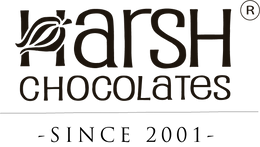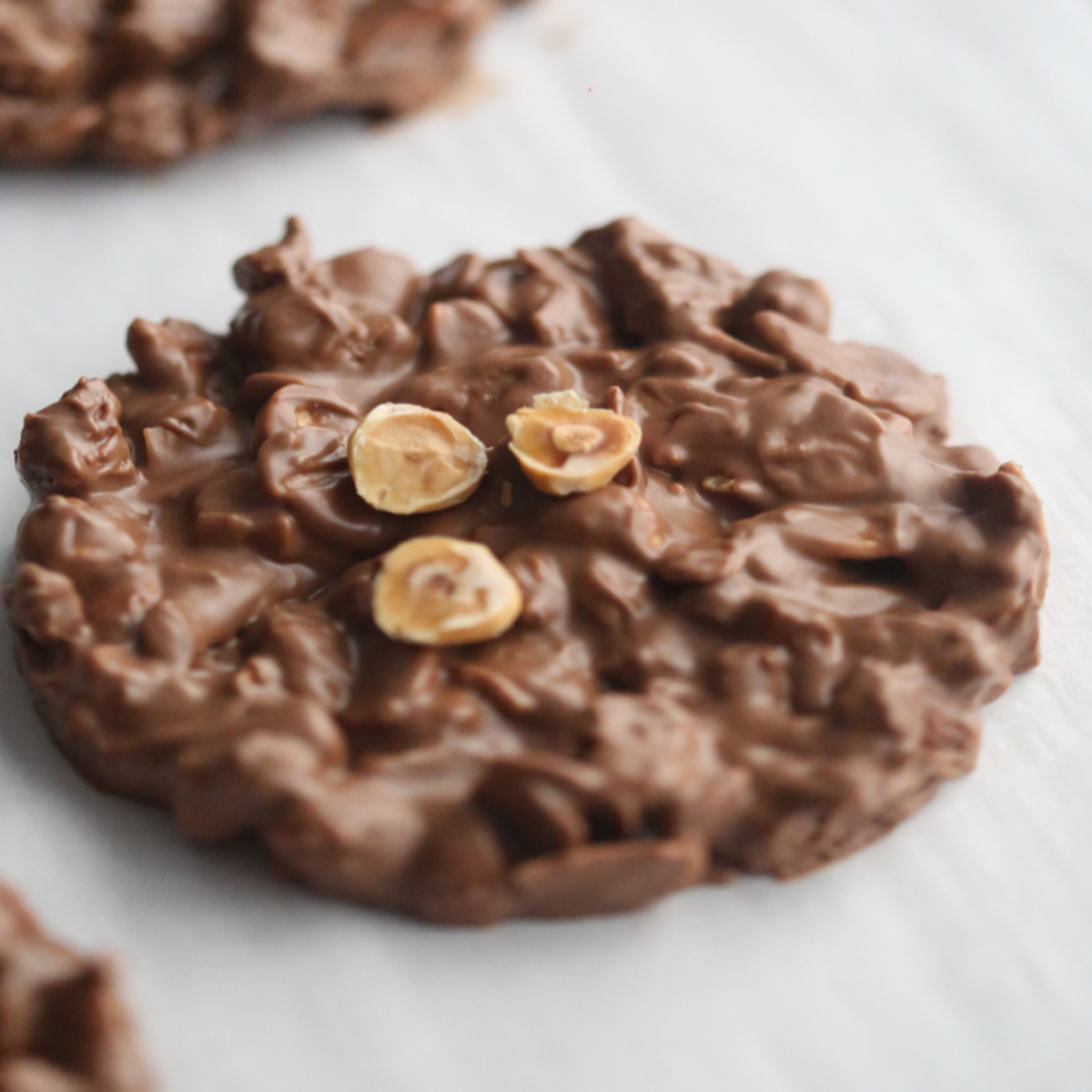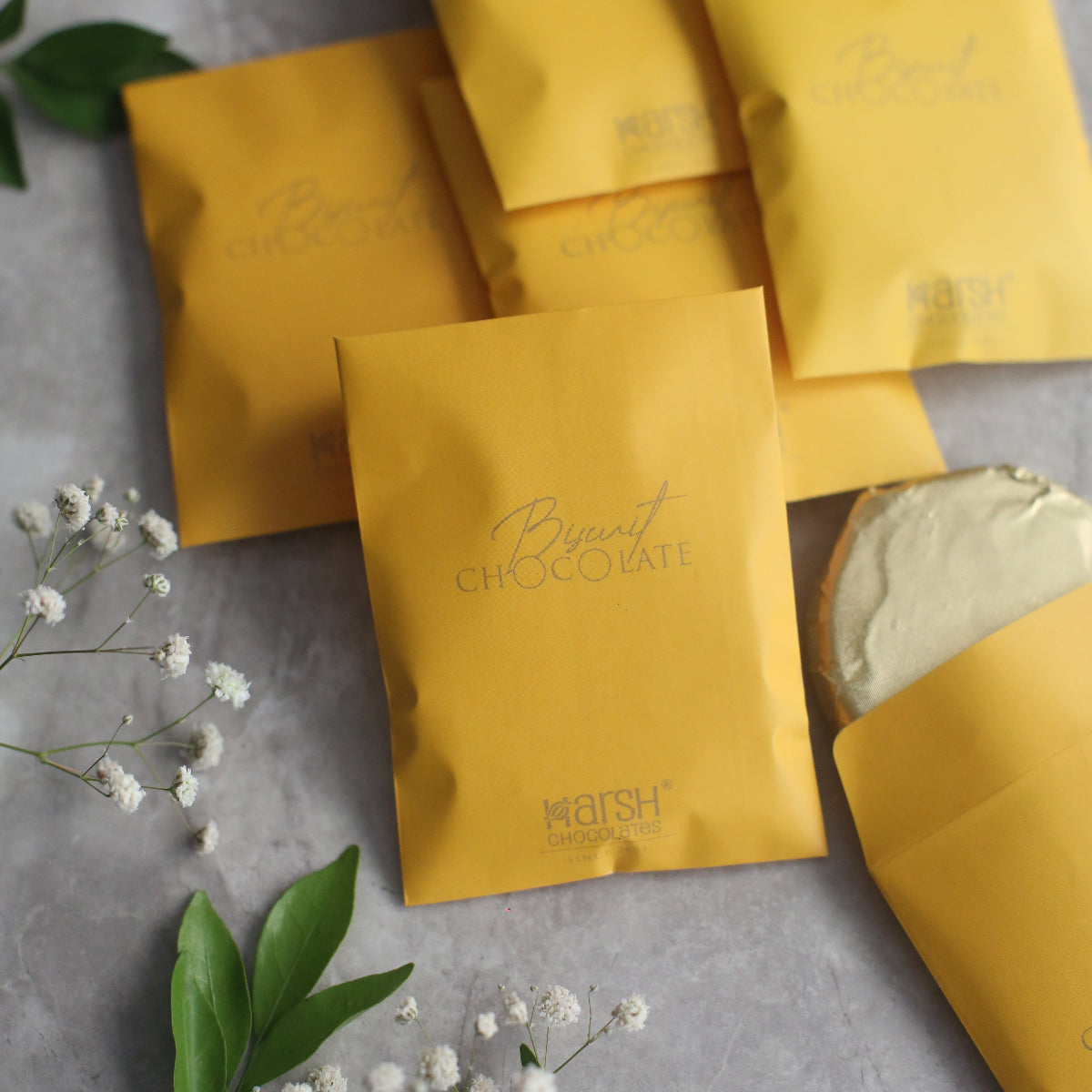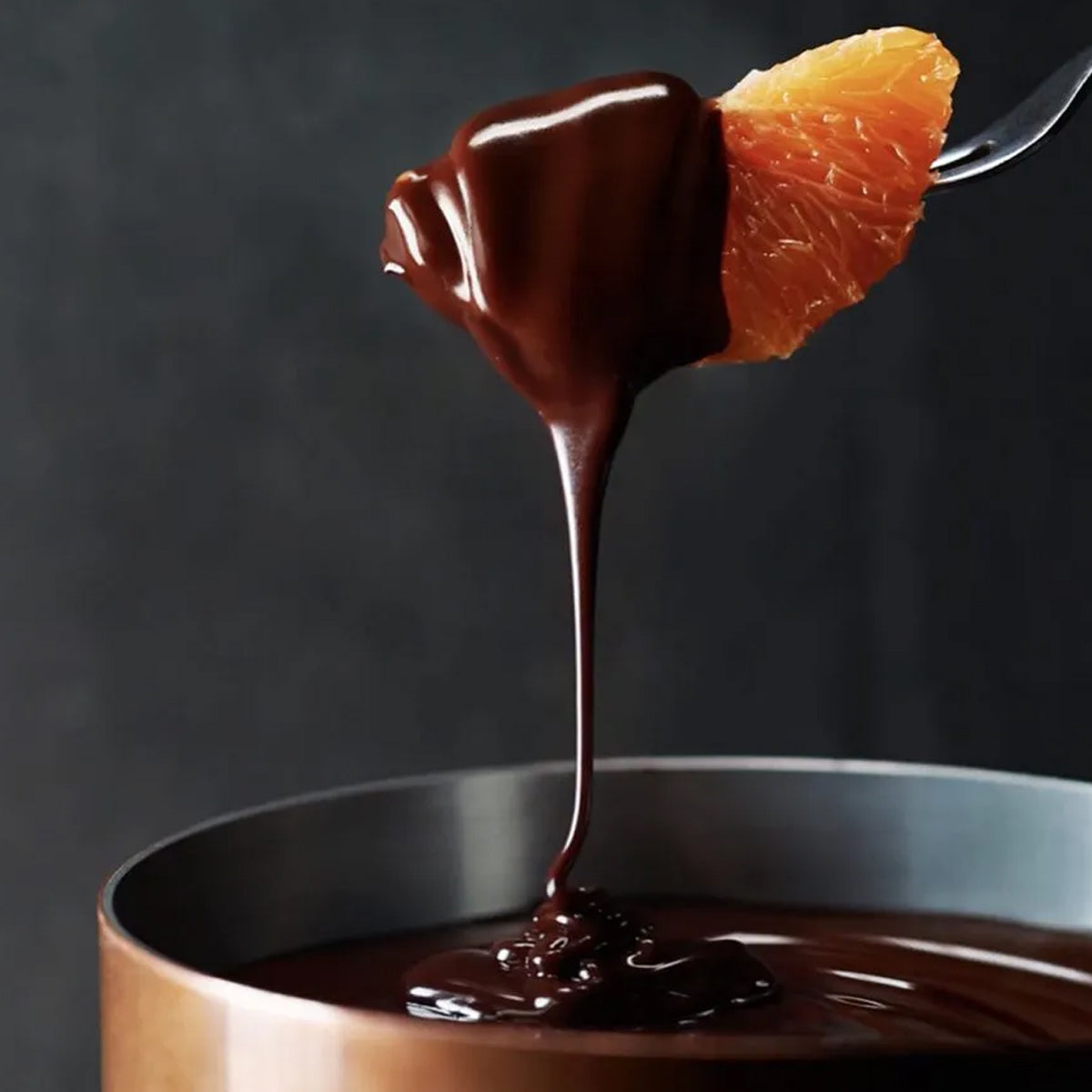
Chocolate brownies are a classic American dessert. We frequently debate their finer points – fudgy, chewy, or cakey? Edge or middle? Dark or milk chocolate? Warm and fresh from the oven or cool to the touch? So beloved are brownies that, according to this 1985 commercial, some people are driven to extremes to get them.
How did the American love for brownies come to be?
The story begins with chocolate.
Chocolate in the British American colonies
In 1670, Dorothy Jones and Jane Barnard each successfully petitioned the city of Boston “to keepe a house of publique Entertainment for the sellinge of Coffee and Chucalettoe [sic].” The record of their petitions is one of the earliest documentations of the presence of chocolate in the British American colonies. Like in Europe, chocolate at first met with mixed reactions; it was found to be so enjoyable that some of the more conservative members of society considered it sinful. This did not stop it from gaining popularity among the elite who could afford it, however, and consumption and gifting of chocolate was gradually accepted.
Records show that wealthier families often enjoyed a cup of chocolate with or as their breakfast in late seventeenth and early eighteenth century New England. The hot chocolate drink of this time was prepared in the European fashion, using a special chocolate pot made of tin, copper, stone, or silver if one was wealthy enough to be so fashionable. A chocolate pot was often taller and larger than a teapot, with a hole in the lid through which a mill or stirring rod could be moved. The pot was placed over a heat source, and a rough cake of chocolate was boiled in water, stirred continuously to fully incorporate it and create a frothy mixture. Sugar was also added, as it would have been with tea or coffee, and sometimes milk or wine.
Chocolate’s popularity quickly spread throughout the American colonies, and increasing quantities were imported from abroad every year. Newspaper advertisements for chocolate sales in the colonies have been traced back to the early eighteenth century, as have customs logs and diary entries mentioning chocolate. During the mid-1700s, Benjamin Franklin advertised chocolate for sale in his Philadelphia print shop. So enamored with what he believed to be chocolate’s abilities to improve health and spirit was Franklin that he even recommended chocolate for smallpox treatment and included “6 lbs. of chocolate” (along with sugar, tea, coffee, vinegar, cheese, Madeira, Jamaican spirits, and mustard) in the provisions shipments for each of the subaltern officers fighting in the French and Indian War.
As demand for chocolate grew and relationships with the British colonial government strained, entrepreneurial New Englanders began manufacturing chocolate locally. In 1765, the first chocolate mill in what would become the United States was established along the Neponset River in the Lower Mills region of Dorchester and Milton, Massachusetts. The chocolate mill, which processed imported cacao into chocolate, went on to become the Walter Baker & Company chocolate manufacturer (still active as the now Kraft-owned Baker’s Chocolate brand).

Baker’s and other manufacturers based on the east coast increased quantities of chocolate available to the American market, drawing new converts. Thomas Jefferson famously wrote to John Adams in 1785, remarking on chocolate’s growing popularity: “The superiority of chocolate, both for health and nourishment, will soon give it the preference over tea and coffee in America, which it has in Spain.”
During the nineteenth century, chocolate’s appeal spread further. To meet demand, larger quantities of cacao were grown in Latin America, the Caribbean, and eventually Africa. Cacao plantations relied heavily on the slave labor prevalent throughout the European colonies, which kept prices down. Advances in technology also allowed manufacturers to produce more chocolate at lesser cost, reducing the price and making it more widely accessible to American consumers. American chocolate makers took pride in their work, entering their products in competitive exhibitions around the world and occasionally winning prizes from elite committees of experts and connoisseurs.
The beginnings of brownies and domestic science
Nineteenth century changes in chocolate taste and form encouraged experimentation in cooking and baking. The first chocolate bars were produced in Britain in the mid-nineteenth century and milk chocolate bars followed a few decades later. The Boston-based chocolatier Walter M. Lowney debuted the first American chocolate bars at the Columbian Exposition held in Chicago, Illinois, in 1893.
Some sources suggest that it was also at the Columbian Exposition that new chocolate baked good was introduced. As the story goes, the wealthy socialite Mrs. Bertha Potter Palmer:
…asked her chef at The Palmer House Hotel in Chicago to create a dessert that could be tucked into a box lunch for ladies to eat while attending the Columbian Exposition. The result was a super-rich, fudgy-chocolate confection – the Palmer House brownie. The brownie remains on the hotel’s menu, but the name of the creative chef, alas, is lost in antiquity.
These brownies, possibly the first ever made, included significant amounts of chocolate, butter, and sugar, as well as cake flour and eggs. Interestingly, they were also topped with walnuts and an apricot glaze. They are still served today at what is now The Palmer House Hilton in Chicago. You can find The Palmer House Brownie recipe online [pdf].
The use of chocolate in baking increased dramatically in the late nineteenth and early twentieth centuries, largely thanks to the efforts of enterprising housekeeping and cooking educators who partnered with industry in the name of “domestic science.” At the Columbian Exposition, for example, Walter Baker & Company demonstrated chocolate making with their equipment and offered free samples to visitors. In an attempt to encourage the use of their chocolate in cooking, they also provided free copies of Maria Parloa’s “Choice Receipts,” a recipe brochure with suggestions on how to use chocolate and cocoa in home kitchens.
Maria Parloa, or “Miss Parloa,” sometimes called the “first celebrity cook,” was a Boston-based educator and author, and the founder of two cooking schools. Parloa was part of a larger movement of educators dedicated to teaching women domestic science skills in the late 1800s and early 1900s. Another cookbook born out of the collaboration between Walter Baker & Company and Miss Parloa is the iconic 1909 work entitled Chocolate and Cocoa Recipes and Home Made Candy Recipes (available online).

Around the turn of the twentieth century, advances in science transformed many housekeeping and cooking tasks that were heavily laborious and largely carried out by women. These included improvements in sanitation technology, the advent of gas and electricity in the home, and the proliferation of tools and concepts designed to make home-based tasks more efficient and business-like. One well-known example is American culinary expert Fannie Farmer’s innovation of “level measurements,” an alternative to cumbersome weighing of quantities or unscientific notions of a “pinch,” “dash,” or “smidgen.”
At the Boston Cooking School, founded in 1879, educators like Maria Parloa and Fannie Farmer offered instruction to women on how best to run a kitchen and a home. These educators promoted their ideas in cooking schools, magazines, clubs, and with lecture tours, with the fundamental belief that efficiently run, business-like homes were good for America. They partnered with institutions in industry, education, and government, forming degree-granting programs, a professional organization, a journal, and annual meetings, to professionalize homemaking and endorse what would eventually come to be known as “home economics.”
It was most likely thanks to the domestic science network and the increasing popularity of related cookbooks, magazines, and cooking schools that brownies came to be known throughout the United States. The question of who published the first brownie recipe is difficult to answer. Fannie Farmer’s 1896 Boston Cooking-School Cook Book (available online) included a recipe for “brownies” that is significantly different than what most have come to expect; it contained no chocolate.
Brownies
1/3 cup butter
1/3 cup powdered sugar
1/3 cup Porto Rico molasses
1 egg well beaten
7/8 cup bread flour
1 cup pecan meat cut in piecesMix ingredients in order given. Bake in small, shallow fancy cake tins, garnishing top of each cake with one-half pecan.
The first published recipe for brownies made with chocolate available on record may be from the Service Club of Chicago’s 1904 Cook Book, a publication of recipes contributed by club members in a section on “Candy.” The recipe, called “Bangor Brownies,” likely a reference to a long-told but as-yet-unsubstantiated story that chocolate brownies originated in Bangor, Maine, looked like this:
Cream one-half cup of butter, one cup sugar. Add two squares (one-quarter cake) Baker’s chocolate, melted, two eggs, one-half cup pastry flour and one-half cup chopped walnuts. Spread on baking tins and bake fifteen minutes in a moderate oven.
Also in 1904, Eleanor P. Quimby’s Home Cookery was published in Laconia, New Hampshire, with the exact same ingredients and proportions as the Bangor Brownies, plus “a little salt” and a teaspoon of vanilla. It is thus possible that these recipes for chocolate brownies were derived from the same original recipe. (Though a popular myth suggests that Mildred Brown Schrumpf, nicknamed “Brownie,” of Bangor, Maine, was the first to publish a brownie recipe, Schrumpf was not born until 1903 and was therefore too young to have developed the dessert.)
Two more chocolate brownie recipes followed in prominent publications, first in Fannie Farmer’s 1906 version of the Boston Cooking-School Cook Book, with a recipe similar to the Bangor Brownies mentioned above. This was certainly the most widely circulated version of the chocolate brownie recipe due to the immense popularity of Farmer’s work. In 1907, Maria Willett Howard, a student of Farmer’s, wrote two brownie recipes for Lowney’s Cook Book (from the Walter M. Lowney chocolate company, mentioned above), with differing amounts of egg, chocolate, and sugar. All three of these recipes are available online.
So popular was the Boston Cooking-School Cook Book, writes Laura Shapiro, that: “When Fannie Farmer died in 1915, over 360,000 copies of the book had been sold, and it was still coming out regularly in printings of 50,000 each.” One version of The Boston Cooking-School Cook Book, from 1908, is available online. The brownie recipe is on page 48 in chapter XXX, entitled “Gingerbread, cookies, and wafers.” Another brownie recipe, from the 1911 edition of the cookbook, is also available online. To this day, Marion Cunningham’s The Fannie Farmer Cookbook remains a classic in American home kitchens and contains several brownie recipes. One can only imagine that the relative simplicity of the brownie recipes and the increasing availability of affordable chocolate contributed to the widespread appreciation of the dessert.
One is also left wondering how chocolate brownies got their name. Much like in the question of the brownie recipe origin, there is no conclusive answer. An 1897 Sears, Roebuck catalogue included elf-shaped sweets called “brownies,” possibly made with molasses or chocolate. Many who have searched for the origin of the name for chocolate brownies have suggested that it was inspired by Palmer Cox’s widely enjoyed illustrated children’s text The Brownies: Their Book, published in 1887, though this has yet to be definitively proven. In Cox’s work, Brownies were nocturnal, helpful, but mischievous “imaginary little sprites.”

Cox’s book was widely enjoyed at the turn of the century, and the Brownies name was also used to refer to a kind of cake, a brand of Eastman Kodak camera, and young Girl Scouts. While the origins of chocolate brownies – in recipe and name – remain obscure, one thing is certain: chocolate companies, domestic scientists, and cookbooks were key to popularizing the chocolate brownie during this time period.
Brownies, efficiency, and advertising
The development of domestic science and home economics and their partnership with industry altered American cooks’ relationships with raw food. More and more, industry aimed to remove the labor of handling raw food from home kitchens. Especially following World War II, frozen, dehydrated, or canned food was increasingly available to consumers. As Laura Shapiro explains in Something From the Oven: Reinventing Dinner in 1950s America, factory-made food also contributed to changing the American palate – in general, it was very sweet, very salty, or very bland and contained a myriad of artificial flavors. Knowing that due to their serious compromises in taste prepared or semi-prepared foods could not be easily sold to consumers on the basis of flavor, the food industry started to market the notions of efficiency and consistency, suggesting that their products could save busy housewives valuable time and avoid the frustration of recipes gone awry. In this way, the industry actively worked to change consumer notions of time in relation to cooking labor.
Simultaneously, the American chocolate industry was undergoing a significant expansion due to technological advances. Chocolate companies like The Hershey Company and Mars, Incorporated developed means to improve the shelf life of milk chocolate and produce larger quantities of candy in factory settings, making chocolate ever more available and affordable. These companies, too, made cost-saving and mass-production-enabling flavor changes to which the American public eventually became accustomed, by including less cacao, more dairy and sugar, and more preservatives than early American chocolate. The chocolate industry thus played a major role in changing American tastes in chocolate to something significantly less “chocolatey.”
Classic American brownies were heavily affected by these developments, primarily through changes in the chocolate available and the culinary innovation of prepared mixes. Three large food companies – General Foods, General Mills, and Pillsbury – played an important role in the development of cake and brownie mixes in the middle of the twentieth century, relying heavily on national distribution and advertising. Companies sponsored national “Bake-Offs” or recipe contest events with cash prizes to encourage home cooking innovation. They also regularly produced television advertisements and sponsored cooking shows to promote their products.
The following 1960 television commercial for Duncan Hines Devil’s Food chocolate cake mix suggests that the mix holds a “Chocolate Tree Secret” from Africa, something that one could not replicate, perhaps, without this exact brand:
Another television commercial, this one from 1965 for Betty Crocker Chocolate Fudge Brownie mix, explains the value of consistency in prepared mixes: “With Betty Crocker, you always get chocolatey, chewy, candy bar-good brownies made with all Hershey’s cocoa.” Through co-branding, Betty Crocker/General Mills and Hershey’s were able to share in the promotion of this brownie mix.
Food companies were also able to capitalize on microwave technology and the growing number of latchkey children beginning in the 1980s, with microwaveable brownies, as evidenced in the following television commercial. Companies promoted their products as models of efficiency, as seen here:
By focusing on these products’ ability to provide shortcuts while maintaining effective results, cake and brownie mix producers were able to convince home cooks around the country to purchase their products, while forever altering the American relationship to home cooking and taste.
Modern-day brownies
Chocolate brownies retain a powerful hold on the American palate and imagination. Today, brownies can be found with a number of flavor variations and add-ons, such as peanut butter, mint, coffee, raspberry, white chocolate, almonds, raisins, candies, or caramel. In the United States, one is never far from an artisan or mass-produced brownie. Controversially, brownies have also been host to marijuana mix-ins in recent decades, and with the increasing legality of medical marijuana usage, they have become one means of therapeutic oral delivery of the drug.
Food industry product design has kept up with changing technology and lifestyles. Following health fads and dietary restrictions, whether high protein, low sugar, low fat, low carb, high fiber, raw, vegan, or gluten-free, brownies have more recently taken on a role as a diet food.
Some brownie recipes even call for beets, black beans, or pureed carrots and spinach, as a means to sneak healthier ingredients into what was originally designed as a dessert. One divisive product recently launched on the market, Lazy Cakes, is a brownie that includes a large dose of melatonin to make consumers sleepy, a counterpart to the host of contentious energy drinks currently available.
Emerging digital research technology can help us to better understand the trajectory of brownie popularity over time. The Google Books Ngram Viewer tool suggests that the word “brownies” has been published significantly more since the 1970s.
While further research is necessary to uncover the roots of the increase in usage of the word in published books, one can assume that it is at least in part due to the ever-growing demand for the classic dessert, as evidenced by the fact that entire cookbooks are now devoted solely to chocolate brownies.
Chocolate exhibitions (most often with free samples) continue to the present day through corporate-sponsored, crowded chocolate salons, food festivals, competitions, and television shows. Brownies have won international converts, with (among countless examples) a popular recipe from British food writer and cooking show host Nigella Lawson:
British pastry chef and chocolatier Paul A. Young has also tried his hand at the American classic, to great acclaim. Many consider his brownie the best in London.
For my part, I prefer a dark chocolate, fudgey brownie made from scratch. Food Network cooking show host Ina Garten, “The Barefoot Contessa,” has a strong recipe for what she has dubbed “Outrageous Brownies.” I recommend using a high quality cocoa powder in place of the espresso that the recipe calls for, as well as high quality unsweetened and dark (70% cacao content or higher) chocolate. Never be afraid to add a bit more chocolate than a brownie recipe calls for, especially when in pursuit of fudgey results.
A home cook could make a thoroughly American brownie with chocolate bars from Madre Chocolate, a bean-to-bar chocolate maker that sources cacao grown in Hawaii, the only part of the United States where cacao is grown. Other high quality American bean-to-bar chocolate makers include Askinosie Chocolate, Amano Artisan Chocolate, Patric Chocolate, Ritual Chocolate, and Rogue Chocolatier, and many of their products are available in specialty stores around the country or online. Another classic standby that promises a delicious brownie is Valrhona, a French chocolate brand with wide distribution in the United States. And, of course, if you find yourself feeling pressed for time or looking for a bit of extra assurance that your brownie recipe will succeed, The Barefoot Contessa has an Outrageous Brownie Mix.





